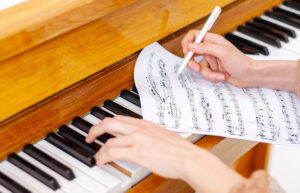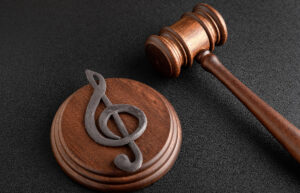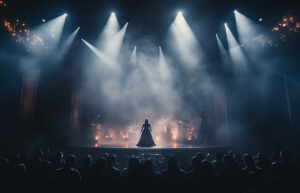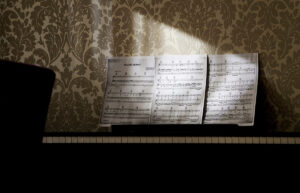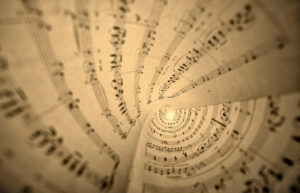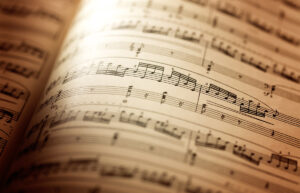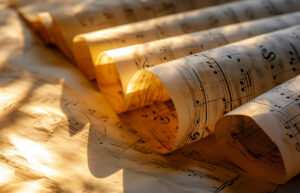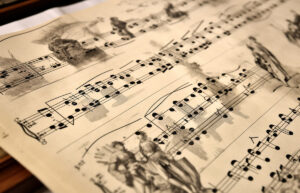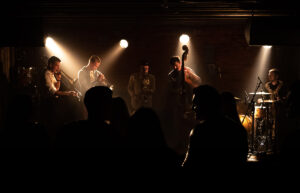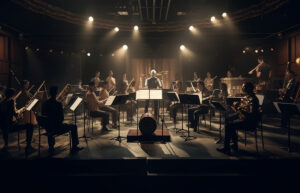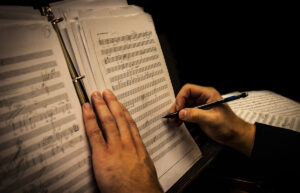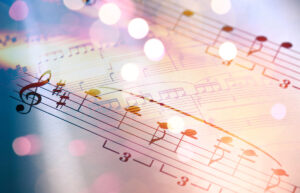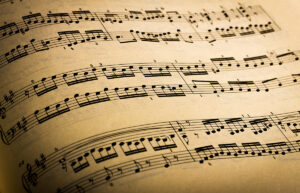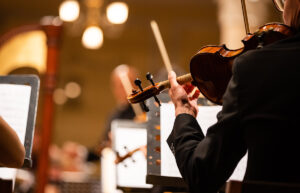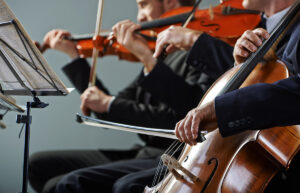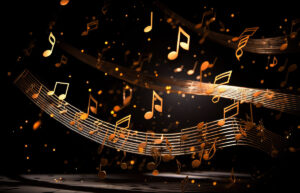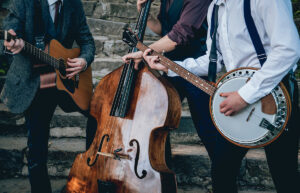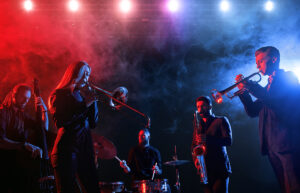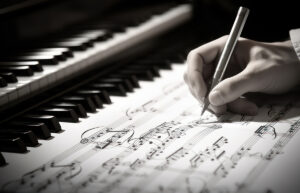Patterns in Harmony: A Guide to Form in Music

Welcome to the musical maze! Just as an architect designs a blueprint for a building, composers intricately craft musical architectures, known as ‘form,’ to shape their melodies, harmonies, and rhythms. Join us on a melodic journey as we unravel the layers of this musical mystery. Are you curious about the concept of ‘What is Form in Music?’ and how these patterns and shapes transform ordinary notes into captivating compositions? Let’s embark on an exploration of the enchanting world of musical form!
Welcome to TheDemoStop, now join the community!
Connect with artists, fans and producers around the world.
What is form in music?
Form in music refers to the organization and structure of a musical composition. It’s the framework that shapes the progression of musical elements such as melody, harmony, rhythm, and texture. Think of it as the blueprint or roadmap that guides the flow of a piece, outlining its sections, repetitions, variations, and developments.
The form allows composers to arrange musical ideas coherently and meaningfully, creating patterns and shaping the overall narrative of the music. There are various forms in music, such as sonata form, rondo, theme, and variations, among others, each with its distinct characteristics and principles that contribute to the composition’s artistic expression and storytelling.
Historical development of musical form
The historical development of musical form has evolved significantly over the centuries. Initially rooted in simple, repetitive structures of early music (such as Gregorian chants and medieval music), musical form expanded during the Renaissance with clearer delineation of sections.
The Baroque period saw the emergence of structured forms like fugue and dance suites—the Classical era refined forms like sonata-allegro and ternary forms, emphasizing thematic development.
Romanticism brought about more expansive and freer forms, allowing composers to experiment with larger structures and unconventional forms. 20th-century music witnessed diverse approaches to form, including serialism, minimalism, and aleatoric music, pushing the boundaries of traditional structures and sometimes abandoning them altogether.
Why is form important in music?
Form in music is crucial as it provides the organizational framework that guides the listener through a piece. It offers coherence, structure, and shape to musical compositions, allowing for the effective communication of musical ideas. Form assists in creating a sense of expectation, contrast, and resolution, enhancing the overall emotional impact and narrative of the music. Additionally, it aids in the memorability and comprehension of a piece, enabling both composers and performers to shape and interpret the music effectively.
Types of form in music
Strophic form
In strophic form, the same music is used for each verse of the lyrics. It’s a straightforward and repetitive structure where the melody repeats with different verses. Many folk songs and hymns, like “Amazing Grace,” follow the strophic form where the melody remains constant while the lyrics change.
Binary form
The binary form consists of two distinct sections, often labeled as A and B. Each section typically presents different material, and the piece moves from the first section (A) to the contrasting second section (B) before returning to the initial theme (A). Many Baroque dances, like minuets and gavottes, are often in binary form.
Ternary form
The ternary form comprises three sections: ABA. The first and third sections (A) share a similar or identical musical material, while the middle section (B) offers contrast before returning to the initial material. Classical minuet and trio forms or pieces like Mozart’s “Eine kleine Nachtmusik” follow a ternary structure.
Rondo form
Rondo form features a recurring main theme (A) that alternates with other contrasting themes (B, C, D, etc.) in a cyclic pattern, like ABACA or ABACABA. The final movements of many Classical sonatas and symphonies often use rondo form.
Medley or chain form
Medley form involves the continuous lining of multiple distinct musical pieces or sections in succession, forming a seamless chain without clear transitions. Musical medleys in shows or performances where snippets of different songs are strung together without pause.
Through-composed form
Through-composed music doesn’t have a repetitive or distinct musical structure. Each section presents new material without direct repetitions, creating a continuous flow. Wagner’s operas or some art songs by composers like Franz Schubert often employ through-composed structures.
Variational form
Variational form involves presenting a theme followed by a series of variations on that theme. Each variation maintains the essence of the original theme while introducing alterations in melody, harmony, rhythm, or texture. Beethoven’s “Diabelli Variations” or Paganini’s “24 Caprices” for solo violin are examples of works using variational form.
Sonata form
Sonata form is a complex structure with three primary sections- exposition, development, and recapitulation. It often features contrasting themes, modulation, and thematic transformation. First movements of Classical sonatas, symphonies, and concertos frequently adhere to sonata form.
Scherzo
In Italian, Scherzo, meaning ‘joke’, is a lively and playful musical form similar to the minuet. It often replaces the minuet as the third movement in symphonies and sonatas—Beethoven’s Symphony No. 9, where the third movement is a scherzo.
12-bar blues
A fundamental blues structure consisting of 12 measures. It follows a specific chord progression and often features three lines of lyrics with a distinctive AAB lyrical pattern. Countless blues songs, like “Crossroads” by Robert Johnson or “The Thrill Is Gone” by B.B. King, utilize the 12-bar blues form as their foundation.
How form is analyzed in music?
Form in music is typically analyzed by examining the arrangement of musical sections, identifying patterns, and understanding the relationships between these sections. This involves breaking down a piece into its structural components (such as verses, choruses, themes, or movements) and labeling them according to established forms or structures like binary, ternary, sonata-allegro, rondo, etc.
Musical analysis also involves recognizing repetitions, contrasts, variations, and developments within the piece to comprehend how the composer organized the material to create a coherent whole. Visual aids like diagrams, charts, or musical notation may be used to illustrate and understand the form’s organization and progression within a composition.
Welcome to TheDemoStop, now join the community!
Connect with artists, fans and producers around the world.
The role of form in music composition
Form in music composition is the architectural blueprint that guides composers in organizing, developing, and communicating their musical ideas while offering listeners a structured and engaging musical experience.
Structural organization
Form is the foundational framework for composers to organize their musical ideas coherently. It provides a roadmap that dictates the arrangement of various musical elements, such as melody, harmony, rhythm, and texture. Composers use forms like sonata-allegro, ternary, rondo, or others as a structural basis to shape their compositions.
Repetition and contrast
The form allows composers to utilize elements of repetition and contrast strategically. Repetition of musical themes, motifs, or sections within a piece creates familiarity and coherence, while contrasts introduce diversity and interest. By alternating between familiar and contrasting elements, composers maintain the listener’s attention and provide a sense of balance and development within the mus
Sections and phrases
Within a musical composition, form divides the piece into sections or phrases. These sections often have their unique characteristics, contributing to the overall narrative of the piece. Each section may contain its melodic or harmonic ideas, and their arrangement within the form influences the music’s emotional arc and dramatic flow.
Genres and traditions
Different musical genres and traditions have their established forms or structures. Composers often draw from these conventions while composing within a specific style or genre. For instance, the structure of a symphony follows a different form compared to that of a sonata or a blues song. Understanding and utilizing these established forms allows composers to communicate effectively within a particular musical tradition or style.
Listener engagement
Form plays a crucial role in engaging the listener. Recognizable patterns, such as the return of a theme in rondo form or the contrasting sections in ternary form, create a sense of anticipation and satisfaction for the listener. Additionally, the organization provided by form allows listeners to follow and comprehend the music more easily, enhancing their overall experience and emotional engagement with the piece.
Examples of form in music
Amazing grace
“Amazing Grace” follows a strophic form. In this form, the same melody is used for each verse of the lyrics. The structure remains consistent throughout the piece, with the melody repeating for each new stanza of the song.
Greensleeves
“Greensleeves” is another piece that typically follows a strophic form. The melody remains constant throughout the song while the lyrics change. This form maintains a repetitive structure in the music.
Twinkle, Twinkle, Little Star
Twinkle, Twinkle, Little Star follows a strophic form. The melody is repeated for each verse of the lyrics, maintaining a consistent musical structure throughout the piece.
Fur Elise by Beethoven
“Fur Elise” is an example of a piece that follows ternary form. It consists of three main sections: an A section (exposition of the main theme), a contrasting B section, and a return to the initial A section. The A-B-A structure creates a sense of familiarity and contrast within the piece.
Conclusion
What is form in music?
Form in music refers to the organizational structure or blueprint that shapes how various musical elements, like melody, harmony, rhythm, and sections, are arranged within a composition. It provides a framework guiding the progression and organization of a piece, enhancing coherence and aiding in the communication of musical ideas.
Historical development of musical form
Musical form’s historical development spans from simple, repetitive structures in early music like chants to more complex forms seen in Baroque dances, Classical sonatas with sonata-allegro, Romantic expansion of forms, and 20th-century experimentation with unconventional structures like serialism and minimalism.
Why is form important in music?
Form in music is crucial as it provides structure, coherence, and organization to compositions, guiding the flow of musical elements. It creates expectations, contrasts, and resolutions, enhancing emotional impact, aiding memorability, and engaging listeners effectively.
Types of forms in music
- Strophic form
- Binary form
- Ternary form
- Rondo form
- Medley or chain form
- Through-composed form
- Variational form
- Sonata form
- Scherzo
- 12-bar blues
How is form analyzed in music?
Form in music is analyzed by identifying and labeling structural components, such as sections or themes, within a composition and understanding their organization, repetitions, contrasts, and developments to comprehend the overall structure and narrative of the piece.
The role of form in music composition
- Structural organization
- Repetition and contrast
- Sections and phrases
- Genres and traditions
- Listener engagement
Examples of form in music
- “Amazing Grace,” “Greensleeves,” and “Twinkle, Twinkle, Little, Star” all use strophic form.
- “Fur Elise” by Beethoven- follows the ternary form
FAQs
What is a form in music?
Form in music is the structure or organization of a musical composition, outlining how its elements are arranged and developed throughout the piece.
Why is form important in music?
Form in music is important as it provides structure, coherence, and organization to compositions, guiding the flow of musical elements for enhanced communication and engagement.
What are the 10 types of musical forms?
- Strophic form
- Binary form
- Ternary form
- Rondo form
- Medley or chain form
- Through-composed form
- Variational form
- Sonata form
- Scherzo
- 12-bar blues
What are examples of form in music?
- “Amazing Grace,” “Greensleeves,” and “Twinkle, Twinkle, Little, Star” all use strophic form
- “Fur Elise” by Beethoven- follows the ternary form
What is a simple binary form in music?
A simple binary form in music consists of two distinct sections labeled A and B, often presenting contrasting musical material, with a return to the initial theme (A) after the contrasting section (B).
What is the strophic form in music?
Strophic form in music involves using the same music for each verse of the lyrics, maintaining a repetitive structure while changing the lyrics. This allows for a sense of familiarity and emphasizes the lyrical content, creating a cohesive and easily recognizable musical arrangement.
What is the most common form in music?
The strophic form also referred to as the verse form or song form, is among the most commonly used musical structures. It typically follows a repetitive AAA structure, making it one of music’s most basic and frequently recurring forms.
What is the role of form in music composition?
The role of form in music composition is to provide a structural framework for organizing musical elements, guiding repetition, contrast, and development while shaping the overall coherence and narrative of the piece.
How is the form in music analyzed?
Analyzing the form in music involves identifying sections, themes, or patterns within a composition and understanding their organization, repetition, variation, and relationships. This process helps in comprehending the overall structure and progression of the piece.






